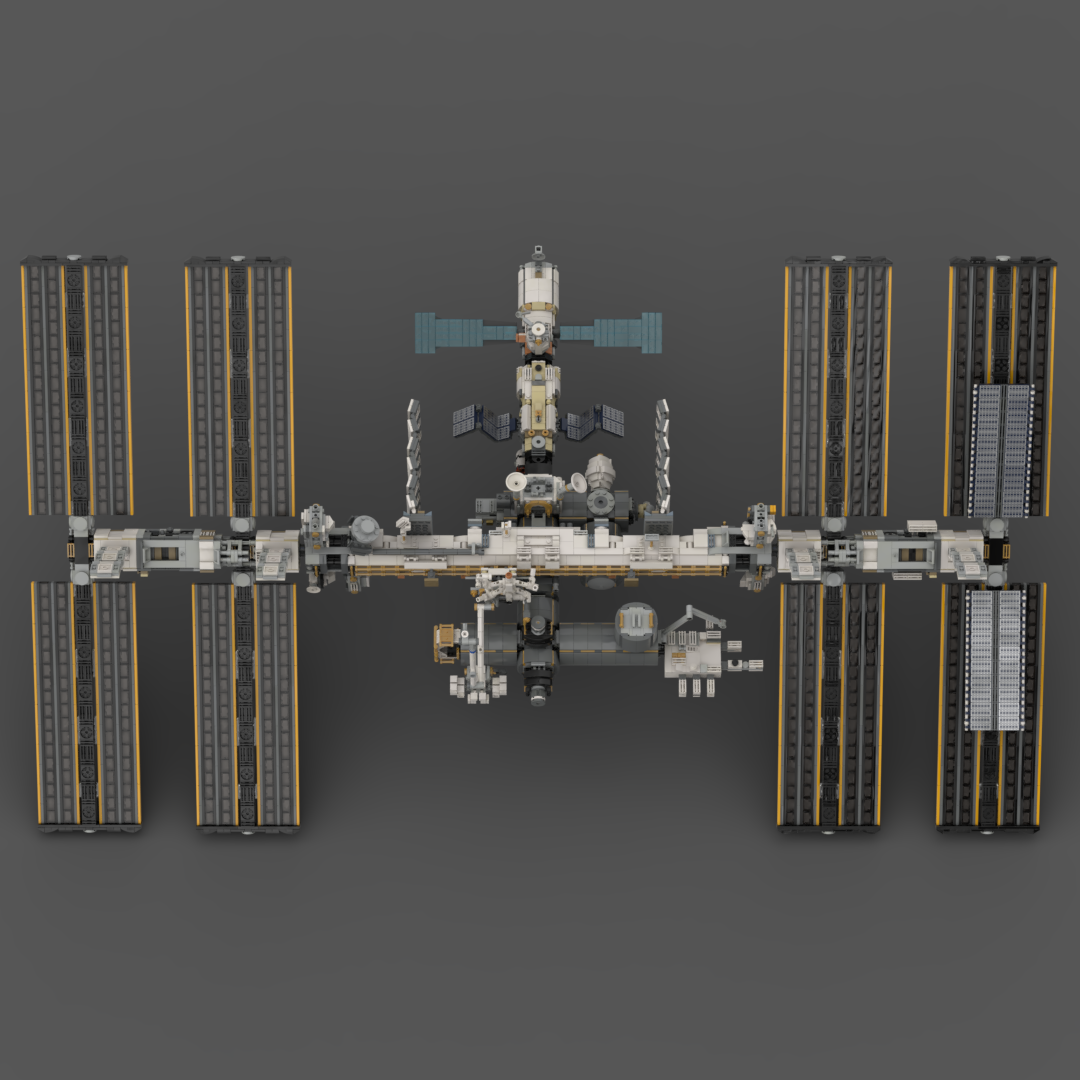The International Space Station (ISS) is a modular space station (habitable artificial satellite) in low Earth orbit. It is a multinational collaborative project between five participating space agencies: NASA (United States), Roscosmos (Russia), JAXA (Japan), ESA (Europe), and CSA (Canada).The ownership and use of the space station is established by intergovernmental treaties and agreements. The station serves as a microgravity and space environment research laboratory in which scientific research is conducted in astrobiology, astronomy, meteorology, physics, and other fields. The ISS is suited for testing the spacecraft systems and equipment required for possible future long-duration missions to the Moon and Mars.
The ISS programme evolved from the Space Station Freedom, an American proposal in the 1980s to construct a permanently crewed Earth-orbiting station, and the contemporaneous Soviet/Russian Mir-2 proposal with similar aims. The ISS is the ninth space station to be inhabited by crews, following the Soviet and later Russian Salyut, Almaz, and Mir stations and the U.S. Skylab. It is the largest artificial object in space and the largest satellite in low Earth orbit, regularly visible to the naked eye from Earth’s surface. It maintains an orbit with an average altitude of 400 kilometres (250 mi) by means of reboost manoeuvres using the engines of the Zvezda Service Module or visiting spacecraft. The ISS circles the Earth in roughly 93 minutes, completing 15.5 orbits per day.
The station is divided into two sections: the Russian Orbital Segment (ROS), operated by Russia; and the United States Orbital Segment (USOS), which is shared by many nations. Roscosmos has endorsed the continued operation of ROS through 2024, having previously proposed using elements of the segment to construct a new Russian space station called OPSEK.The first ISS component was launched in 1998, and the first long-term residents arrived on 2 November 2000. The station has since been continuously occupied since, the longest continuous human presence in low Earth orbit, having easily surpassed the previous record of 9 years and 357 days held by the Mir space station. The last major pressurised module, Leonardo, was fitted in 2011 and an experimental inflatable space habitat, BEAM, was added in 2016. Development and assembly of the station continues, with several major new Russian elements scheduled for launch starting in 2021.
Habitable Modules
The Habitable modules serve as a habitat for its crew and provide ports for docking and berthing of visiting vehicles. The station functions as a microgravity and life sciences laboratory, test bed for new Elements and Support Systems technologies, and platform for Earth and celestial observations.
Integrated Truss Structure (ITS)
The truss assemblies provide attachment points for the solar arrays, thermal control radiators, and external payloads. Truss assemblies also contain electrical and cooling utility lines, as well as the mobile transporter rails. The Integrated Truss Structure (ITS) is made up of 11 segments plus a separate component called Z1. These segments are installed on the station so that they extend symmetrically from the center of the ISS.
Mobile Servicing System (MSS)
The Mobile Servicing System (MSS) is a robotic system on board the ISS that moves equipment and supplies around the station, supports astronauts working in space, and services instruments and other payloads attached to the ISS and is used for external maintenance. Astronauts receive specialised training to enable them to perform these functions with the various systems of the MSS.
External Modules
ELCs – The EXpedite the PRocessing of Experiments to Space Station (EXPRESS) Logistics Carrier (ELC) is a platform designed to support external payloads mounted to the International Space Station starboard and port trusses with either deep space or Earth views.
ESPs – External stowage platforms (ESPs) are key components of the International Space Station (ISS). Each platform is an external pallet that can hold spare parts, also known as orbital replacement units (ORUs), for the space station. As a platform it is not pressurized, but does require electricity to power the heaters of some of the stored equipment. ORUs are attached to the ESP via Flight Releasable Attachment Mechanisms (FRAMs), matching witness plates that mate the ORU to the platform.
Exposed Facility – The Exposed Facility (EF) provides a multipurpose platform where science experiments can be deployed and operated in the exposed environment. The payloads attached to the EF can be exchanged or retrieved by Kibo’s robotic arm.
Visiting Spacecraft
The station is serviced by a variety of visiting spacecraft: the Russian Soyuz and Progress, the U.S. Dragon and Cygnus, the Japanese H-II Transfer Vehicle, and, formerly, the European Automated Transfer Vehicle. The Dragon spacecraft allows the return of pressurised cargo to Earth, which is used, for example, to repatriate scientific experiments for further analysis.
Downloads
please note:
Currently only the stud.io files are available. I am working towards getting instructions completed for this model in 2021
Habitable Modules
Integrated Truss Structure
Mobile Servicing System
External Modules
Pay what you feel
Mobile Servicing System
External Modules
Pay what you feel
Pay what you feel
This digital model is provided free of charge. However, if you like it, and you would like to thank the designer for their time, please consider a donation of your choice. 100% of your donation will go directly to the designer.
Donations can be made by following this link:
Further Information and References
Designer Notes
Part count: bricks, lots.
| Unit | width | length | height |
|---|---|---|---|
| Studs | |||
| Inches | |||
| Centimetres |
